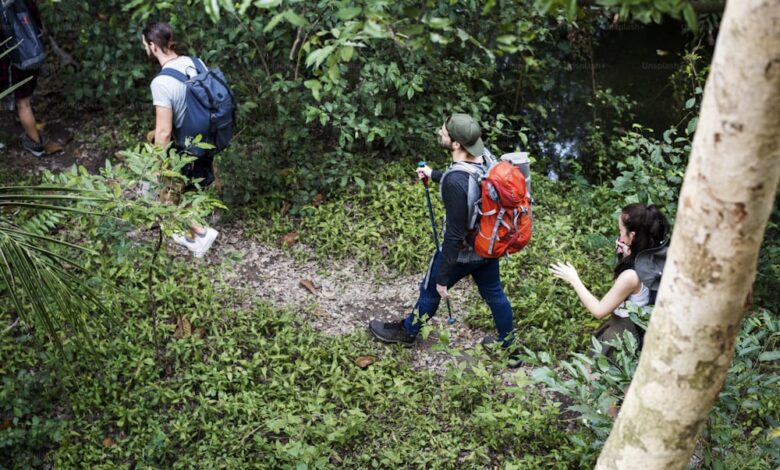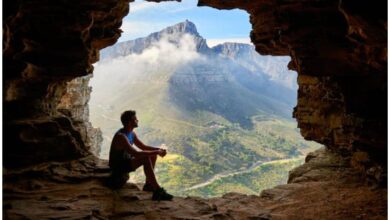Sustainable Trekking Practices for the Everest Base Camp Adventure

Embarking on the Everest Base Camp trek is an incredible adventure, but it also carries the responsibility of minimizing environmental impact and promoting sustainability. Sustainable trekking practices are essential to preserve the delicate Himalayan ecosystem and ensure that the natural beauty of the region is maintained for future generations.
One of the core principles of sustainable trekking is minimizing waste. This starts with packing out everything you bring in, including all trash, food wrappers, and personal waste. Many trekking areas, including those around Everest, have specific waste management practices in place. Ensuring you follow these guidelines helps prevent pollution and protects local wildlife from harm. Using biodegradable soap and avoiding single-use plastics are also crucial practices. Instead of disposable water bottles, consider carrying a reusable water bottle and using purification tablets or filters to ensure safe drinking water.
Energy conservation is another key aspect. The Everest region relies heavily on traditional and often limited energy sources. By conserving energy, you help reduce the strain on local resources. Simple actions, such as turning off lights when not in use, using energy-efficient devices, and conserving hot water, can make a significant difference.
Respecting local customs and communities is equally important. Everest Base Camp Trek Solo Travel Engaging with local cultures respectfully ensures that the social and cultural impacts of tourism are positive. This includes learning about and respecting local traditions, avoiding behavior that might be considered disrespectful, and supporting local businesses and artisans. When you stay in teahouses or lodges, be mindful of your interactions with staff and local residents. Purchasing locally-made goods and services helps to sustain the local economy and provides a more authentic travel experience.
Wildlife conservation is also a vital consideration. The Everest region is home to diverse flora and fauna that can be adversely affected by human activity. Maintaining a respectful distance from wildlife, avoiding feeding animals, and staying on established trails helps protect their natural habitats. Additionally, minimizing noise and other disturbances ensures that wildlife is not unnecessarily stressed by human presence.
Education and awareness play a crucial role in sustainable trekking. Trekkers should educate themselves about the environmental challenges faced by the region and take proactive steps to mitigate their impact. Many trekking companies and organizations offer information and resources on sustainable practices, and incorporating this knowledge into your trek planning can lead to a more environmentally responsible adventure.
Ultimately, sustainable trekking practices are about ensuring that the beauty and integrity of the Everest region are preserved while allowing trekkers to experience its wonders. By adopting these practices, you contribute to the preservation of this extraordinary environment, support local communities, and promote responsible tourism that respects both nature and culture.
Introduction
Embarking on the Everest Base Camp trek is not only a remarkable adventure but also a responsibility towards the environment and local communities. As trekking gains popularity, the need to adopt sustainable practices has become increasingly important to preserve the natural beauty and cultural heritage of the region. Sustainable trekking practices help ensure that this majestic journey remains unspoiled for future adventurers. This guide provides insights into the essentials of sustainable trekking, focusing on understanding eco-friendly practices, minimizing waste, and adhering to the principles of leaving no trace. By integrating these practices into your trek, you contribute to the preservation of the Everest region’s pristine environment and support local communities.
Understanding Sustainable Trekking
Sustainable trekking involves adopting practices that minimize environmental impact and enhance the positive contributions of tourism. It encompasses a range of actions, from reducing waste and conserving energy to respecting local cultures and wildlife. Understanding these principles starts with recognizing the fragile nature of high-altitude ecosystems and the pressures they face from increasing foot traffic. Sustainable trekking aims to balance the desire for adventure with the need to protect natural resources and maintain the cultural integrity of local communities. This means being mindful of your environmental footprint, making responsible choices about the gear and supplies you use, and supporting practices that promote long-term ecological and cultural sustainability.
Importance of Eco-Friendly Practices
Eco-friendly practices are crucial for preserving the delicate balance of natural ecosystems encountered during the Everest Base Camp Trek Fitness Preparation. As trekkers, we have a responsibility to minimize our environmental footprint by making choices that reduce harm to the landscape and wildlife. Eco-friendly practices include using reusable items instead of disposables, conserving water and energy, and avoiding activities that could disturb local flora and fauna. Adopting such practices helps mitigate the adverse effects of trekking on the environment, such as pollution, waste accumulation, and habitat disruption. By incorporating eco-friendly habits into your trekking routine, you contribute to the conservation of the Everest region’s natural beauty and support sustainable tourism efforts.
Minimizing Waste and Trash
Minimizing waste and managing trash effectively are essential components of sustainable trekking. The Everest region faces challenges with waste management due to its remote location and the high volume of trekkers. To help reduce waste, start by packing out all of your trash, including food wrappers, tissues, and other disposables. Opt for biodegradable or reusable alternatives, such as cloth bags and metal containers, to reduce reliance on single-use plastics. When purchasing food and supplies, choose items with minimal packaging. Additionally, consider bringing a personal trash bag to ensure that any waste generated during the trek is carried out properly. By making these conscious choices, you help alleviate the strain on local waste management systems and contribute to the preservation of the environment.
Leave No Trace Principles
The Leave No Trace principles are fundamental guidelines for minimizing human impact on the environment during outdoor activities, including trekking. These principles emphasize the importance of planning ahead, respecting wildlife, and adhering to established trails to prevent ecological damage. Key aspects of Leave No Trace include packing out all waste, avoiding the creation of new trails, and minimizing campfire impact by using stoves instead of fires. Respecting wildlife means observing animals from a distance without disturbing them or their habitats. By following these principles, trekkers help maintain the natural integrity of the Everest region and ensure that future adventurers can enjoy the same pristine environment. Incorporating Leave No Trace practices into your trek not only supports environmental conservation but also fosters a culture of responsible and respectful trekking.
Supporting Local Communities
Supporting local communities during the Everest Base Camp trek is a crucial aspect of responsible and sustainable tourism. Trekkers can make a positive impact by engaging with and supporting the local Sherpa communities through various means. Choosing to stay in locally-owned teahouses and lodges ensures that the economic benefits of tourism are directly shared with the residents. Purchasing locally-made crafts and goods, rather than imported items, helps sustain traditional crafts and provides fair income to artisans. Additionally, interacting respectfully with local people, understanding their customs, and participating in community-led initiatives can further enhance the positive impact of your visit. By fostering these connections and making mindful spending choices, trekkers contribute to the economic stability and cultural preservation of the region.
Responsible Wildlife Interaction
Responsible wildlife interaction is essential for preserving the natural habitats and well-being of animals in the Everest region. Everest Base Camp Trek Weather Conditions The diverse wildlife in the area, including the endangered red panda and various bird species, faces pressure from increased human activity. Trekkers should observe wildlife from a distance to avoid disturbing their natural behaviors and habitats. Feeding animals or approaching them too closely can disrupt their natural foraging and social behaviors. Additionally, trekkers should stay on designated trails to prevent habitat degradation. By practicing responsible wildlife interaction, trekkers help protect the region’s biodiversity and ensure that wildlife can thrive in their natural environment without undue stress or harm.
Eco-Friendly Gear and Equipment
Choosing eco-friendly gear and equipment is a significant step toward reducing your environmental impact on the Everest Base Camp trek. Opt for gear made from sustainable materials and those designed to minimize waste, such as reusable water bottles, durable clothing, and multi-use items. Avoid single-use plastics and opt for gear that has been produced with environmentally-friendly practices. For instance, select sleeping bags and clothing that use recycled or responsibly sourced materials. Many companies now offer gear designed with low-impact manufacturing processes. Additionally, maintaining and repairing gear rather than replacing it can extend its lifespan and reduce waste. By investing in eco-friendly gear, trekkers contribute to the overall reduction of environmental impact and promote sustainability within the trekking industry.
Sustainable Cooking and Food Practices
Sustainable cooking and food practices are vital for minimizing environmental impact while trekking in the Everest region. Opt for cooking methods that conserve energy, such as using efficient stoves instead of open fires, which can cause deforestation and environmental degradation. Bring reusable utensils and containers to reduce waste from single-use items. When possible, carry food that has minimal packaging and is sourced from sustainable suppliers. If you’re dining at lodges or teahouses, choose meals that are made from local ingredients, which often have a lower carbon footprint compared to imported goods. Additionally, be mindful of food waste by consuming appropriate portions and carrying out any leftover food. By adopting these sustainable food practices, trekkers can reduce their environmental impact and support the health of the local ecosystem.
Water Conservation Techniques
Water conservation is crucial during the Everest Base Camp trek, given the limited availability of clean water in high-altitude areas. To conserve water, start by using only the amount you need for drinking, cooking, and personal hygiene. Bring a water filter or purification tablets to ensure safe drinking water without relying on disposable plastic bottles. Reuse water when possible, such as using washing water for cleaning dishes. When brushing teeth or washing hands, turn off the tap while lathering to minimize water waste. Additionally, follow any guidelines provided by local lodges regarding water use. By adopting these water conservation techniques, trekkers help protect precious water resources and ensure that they remain available for both local communities and future trekkers.
Educating Fellow Trekkers
Educating fellow trekkers about sustainable practices is a crucial part of promoting responsible tourism on the Everest Base Camp Trek Accommodations. As trekkers encounter each other along the trail, sharing knowledge about eco-friendly practices, waste management, and respectful behavior can amplify the impact of individual efforts. Discussing topics like the importance of minimizing waste, conserving water, and respecting local customs encourages a collective responsibility toward sustainability. Creating awareness about the challenges faced by the Everest region and the positive effects of adopting sustainable habits can foster a community of environmentally conscious trekkers. Informal conversations, organized briefings, or sharing educational materials can all contribute to a more informed and responsible trekking community.
Choosing Sustainable Tour Operators
Selecting a sustainable tour operator is a key decision that impacts the overall environmental and cultural footprint of your Everest Base Camp trek. Sustainable tour operators prioritize eco-friendly practices, such as minimizing waste, using renewable energy sources, and ensuring fair treatment of staff and porters. They often engage in community development and conservation efforts, enhancing the positive impact of tourism. Research and compare different operators, looking for certifications or memberships in responsible tourism organizations. Read reviews from previous trekkers and inquire about the operator’s commitment to sustainability. Choosing a tour operator that aligns with your values ensures that your trek supports responsible practices and contributes positively to the local communities and environment.
Carbon Offset Strategies
Offsetting the carbon footprint of your Everest Base Camp trek is an effective way to counterbalance the environmental impact of travel. Carbon offset strategies involve investing in projects that reduce or capture greenhouse gas emissions, such as renewable energy initiatives, reforestation projects, or energy efficiency programs. Before your trek, calculate the estimated carbon emissions associated with your travel, including flights and transportation. Numerous organizations offer carbon offset programs where you can purchase credits to support these projects. By participating in carbon offsetting, you help mitigate the impact of your trek on the climate and support global efforts to combat climate change, contributing to a more sustainable trekking experience.
Cultural Sensitivity and Preservation
Cultural sensitivity and preservation are essential components of responsible trekking on the Everest Base Camp route. Respecting local customs and traditions not only enhances your travel experience but also supports the preservation of cultural heritage. Engage with local communities respectfully, seek permission before taking photographs, and dress modestly, especially in culturally sensitive areas. Understanding and adhering to local norms helps foster positive relationships between trekkers and residents. Supporting traditional crafts and participating in community-led activities can also contribute to the preservation of cultural practices. By demonstrating cultural sensitivity, trekkers play a role in maintaining the rich cultural tapestry of the Everest region and ensuring that tourism benefits local communities.
Conclusion: Committing to Sustainable Trekking
Committing to sustainable trekking practices is fundamental for preserving the natural beauty and cultural heritage of the Everest Base Camp region. By adopting eco-friendly habits, supporting local communities, and choosing responsible tour operators, trekkers can make a positive impact on both the environment and the people they encounter. Educating fellow trekkers, offsetting carbon emissions, and practicing cultural sensitivity further enhance the sustainability of the trekking experience. Embracing these principles ensures that the Everest Base Camp trek remains a viable and enriching adventure for future generations. Committing to sustainable practices reflects a deep respect for the planet and its inhabitants, ensuring that the legacy of your trek is one of responsibility and positive contribution.



